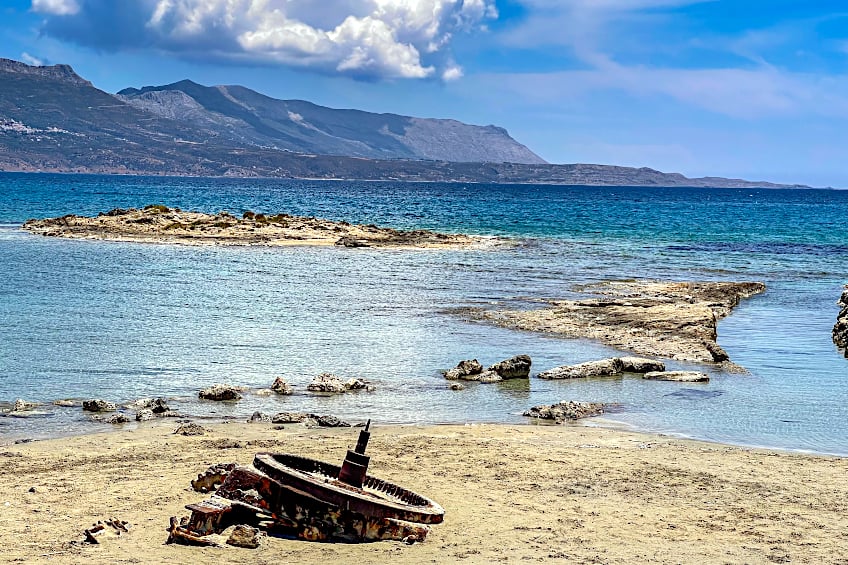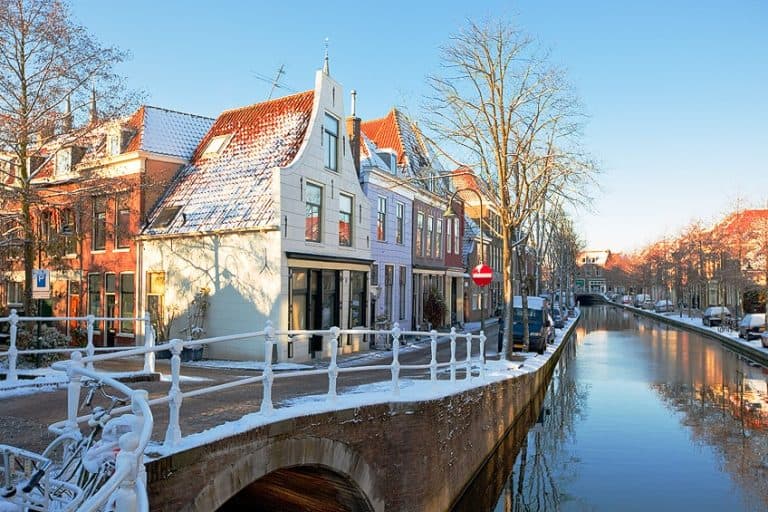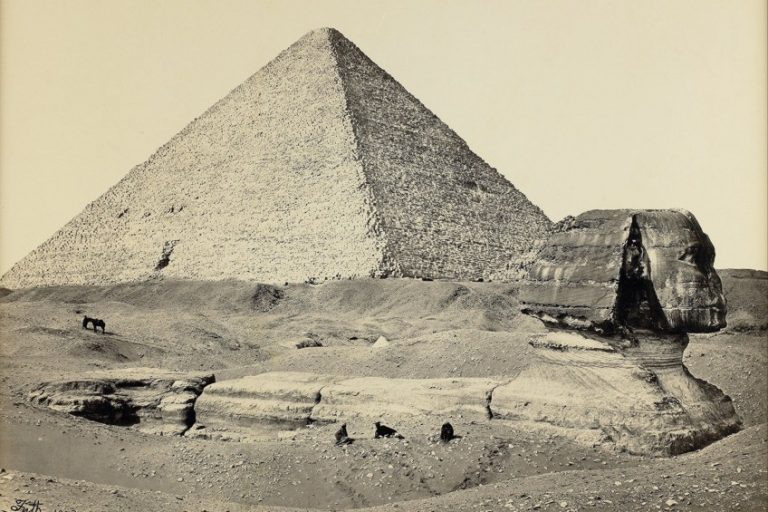Greek History of the Sunken City Pavlopetri – Maritime Archaeology
The earliest recorded underwater metropolis yet discovered is the city of Pavlopetri in Greece. This underwater city in Greece is located in Vatika Bay in the Peloponnese, and its origins date back to 5,000 years ago. The underwater city in Greece is rare in that it still has an almost completely intact city layout, replete with houses, streets, and cemeteries. Due to its unique Greek history, the sunken city Pavlopetri is protected by UNESCO’s underwater cultural heritage protection program. To submerge ourselves deeper into this fascinating subject, let’s find out more about this intriguing lost city under the sea.
The Mysteries of the Submerged City of Pavlopetri in Greece
| Architect | Unknown |
| Date | c. 3,500 BCE |
| Function | City |
| Location | Vatika Bay, Peloponnese, Greece |
The ruins were initially assigned to the Mycenaean period, around 1,600 to 1,100 BCE, but further research revealed a much older habitation going back to 3,500 BCE, therefore it also includes items from the Final Neolithic Age, through the Bronze Age, and to the middle Minoan period, as well as transitional material.
The village was thought to have been flooded in 1,000 BCE by the first of three seismic events that struck the area.
Because the submerged terrain never re-emerged, it was not built over or disturbed by agriculture. The city plan has not changed throughout the ages, despite being eroded. Ships dragging anchors, as well as visitors and souvenir poachers, pose a threat to the lost city under the sea.
Discovery and Location of Pavlopetri in Greece
Pavlopetri, found by Nicholas Flemming in 1967 and surveyed the following year by a group of Cambridge archaeologists, is situated on the Peloponnese peninsula. The archeological site is situated on the old “Onou Gnathos” peninsula in the district of Elafonisos. During the time before Pavlopetri was underwater, Eflafonisos would have been linked to the Peloponnese via Pavlopetri. Since that time, the rising sea level and seismic activity have submerged the lost city under the sea, increasing the distance between the Peloponnese and Elafonisos.
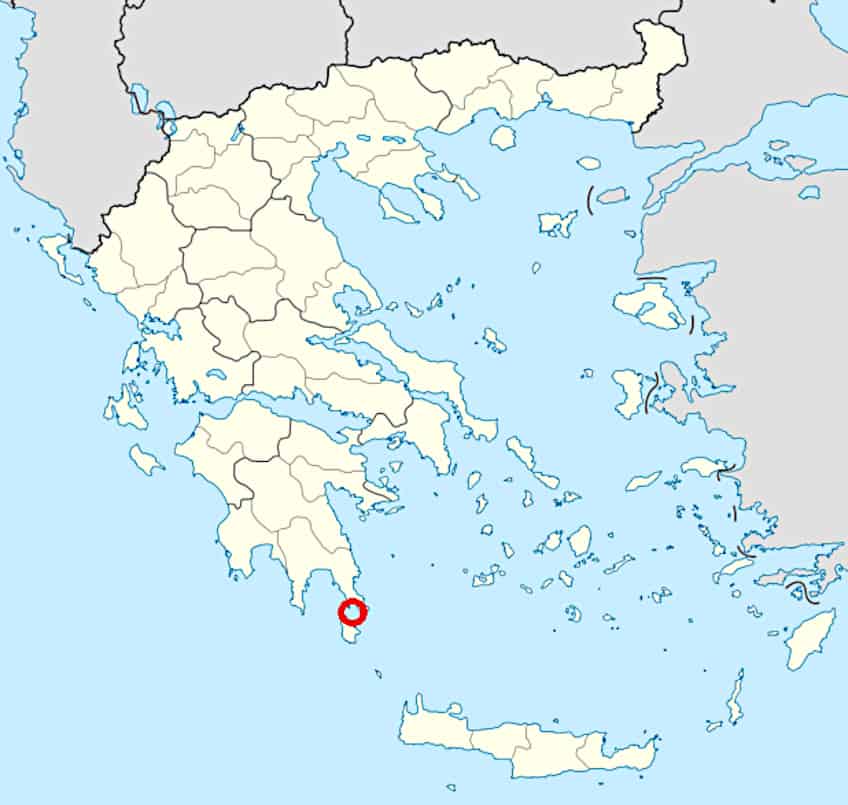
Modern Exploration of Pavlopetri in Greece
The primary goal of the 2009 fieldwork was to explore the site. The development of sonar mapping tools by the defense and oil exploration companies has helped the latest research projects. At least 15 structures in the city are inundated by 3 to 4 meters of water. Just the most recent discoveries from 2009 cover 9,000 square meters. In October 2009, four further fieldwork sessions were scheduled in partnership with the Greek government as part of a cooperative excavation effort.
A group of scientists from the Australian Centre for Field Robotics worked alongside Nottingham University archaeologists to bring underwater archaeological research into the 21st century. Several one-of-a-kind robots have been created to examine the location in multiple ways.

One of the survey’s findings was that the city was the center of a major textile industry, based on the numerous loom weights discovered on the site. A great number of big clay jars from Crete were also discovered, indicating an important commerce port.
A group from the Hellenic Centre for Maritime Research reconstructed the coastline surrounding the location using stereo-photogrammetric data gathered during the surveys in 2010. This includes the geomorphology of the region between the Pounta beaches in Vigklafia and Elafonisos. This investigation was conducted in order to determine how the location got flooded as well as the time frame during which it occurred. They believed that several distinct earthquakes would have gradually reduced the location over time.
Interesting Discoveries
During the 2011 excavation season, a group from Nottingham University unearthed some original deposits that provided them with information about the location. These deposits revealed that the residents of Pavlopetri had trade links with the neighboring Minoan-inhabited island of Crete.
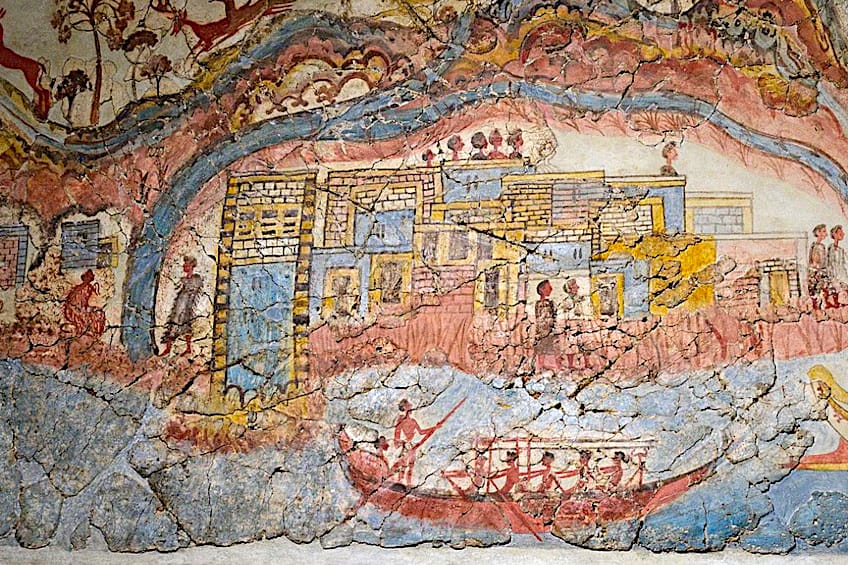
The team from Cambridge University discovered something significant in 1968 as well. They uncovered two types of tombs, indicating a social class divide. There were two Chamber tombs and over forty Cist burials identified.
Unfortunately, because they had left the lost city under the sea alone for 40 years, from 1968 to 2008, the majority of these cist burials had been ruined when they returned. This was partially due to what happens to objects when they are submerged. Nevertheless, it was primarily the culpability of humans for causing environmental damage.

Archaeologists also discovered 15 structures, each with up to 12 rooms. The sands at Pavlopetri would have likewise been ideal for stranding bronze-age ships. More proof that Pavlopetri was a trading center over both short and large distances. The most essential aspect of Pavlopetri is its age. It has been well preserved under the sand for 5,000 years. This means that in world history, not only Greek history, the sunken city Pavlopetri is the oldest submerged city yet to be discovered.
Pavlopetri is located in a tiny islet where antiquity meets the infinite blue of the Mediterranean Sea. This magnificent area, which is virtually entirely unknown to the majority of individuals contains one of the most incredible stories in Greek history, the sunken city Pavlopetri since it is the oldest ancient Greek city ever unearthed underwater. The city’s extensive history, on the other hand, dates back approximately 5,000 years, because the larger area was known to have been populated from the earliest ages of the history of Greece.
Frequently Asked Questions
What Are the Dangers Facing Pavlopetri in Greece?
Since its rediscovery in 1967, the site has encountered several challenges. One of these issues is sediment movement, which damages the remains. Small boats cruise above the site, moving silt on the seafloor, which gradually deteriorates the site. Large ships are also an issue in Vatika Bay. These ships dump waste, which harms ancient remains and is also harmful to the environment.
Are There Any Preservation Initiatives Involving the City of Pavlopetri in Greece?
Pavlopetri garnered increased attention when a study from 2009 to 2013 revealed that it is at risk, and many individuals decided to band together to attempt to halt the pollution and harm that was being done. One thing they are attempting to prevent is the approval of a port rule that would allow huge ships to anchor in Vatika Bay. They want to build a type of safety net out of buoys. These buoys would ring the property and keep ships at bay.
Justin van Huyssteen is a freelance writer, novelist, and academic originally from Cape Town, South Africa. At present, he has a bachelor’s degree in English and literary theory and an honor’s degree in literary theory. He is currently working towards his master’s degree in literary theory with a focus on animal studies, critical theory, and semiotics within literature. As a novelist and freelancer, he often writes under the pen name L.C. Lupus.
Justin’s preferred literary movements include modern and postmodern literature with literary fiction and genre fiction like sci-fi, post-apocalyptic, and horror being of particular interest. His academia extends to his interest in prose and narratology. He enjoys analyzing a variety of mediums through a literary lens, such as graphic novels, film, and video games.
Justin is working for artincontext.org as an author and content writer since 2022. He is responsible for all blog posts about architecture, literature and poetry.
Learn more about Justin van Huyssteen and the Art in Context Team.
Cite this Article
Justin, van Huyssteen, “Greek History of the Sunken City Pavlopetri – Maritime Archaeology.” Art in Context. June 23, 2023. URL: https://artincontext.org/greek-history-of-the-sunken-city-pavlopetri/
van Huyssteen, J. (2023, 23 June). Greek History of the Sunken City Pavlopetri – Maritime Archaeology. Art in Context. https://artincontext.org/greek-history-of-the-sunken-city-pavlopetri/
van Huyssteen, Justin. “Greek History of the Sunken City Pavlopetri – Maritime Archaeology.” Art in Context, June 23, 2023. https://artincontext.org/greek-history-of-the-sunken-city-pavlopetri/.


